If you live in a city like Berlin, chances are there is street art all around you. Take a moment to pause and look, you may be surprised by what you see. Welcome to Canvas City.
What exactly was I looking at? More vexing, what should I frame? The wall (there had to be a wall behind all that, right?) was plastered top to toe in paint, peeling paper, tape, bits of paper, words, lots of words and even more paint…. Then I saw her.
She appeared from under a cloud of confetti, lost in music. The music hypnotising her dancing form. Her eyes, I couldn’t see her eyes, but they would have been closed, were shielded behind dark glasses. One arm was outstretched above her head. Another inexplicably lost under tape. The tape had words, a phrase, that repeated over and over in a border around her dancing frame. Then I saw she was not alone.
A bit of Background
Ever since the Wall came down, Berlin has drawn artists to its streets like no other city. In one evening’s walk, I came across El Bocho, Jimmy C, XOOOOX, Vhils, D7606, SOBR, rylsee, Zebu and many others.
Street art in Berlin started in the sixties with graffiti, in an angry response to the physical division the Wall imposed between families and communities. Tags were the most common form of graffiti. The brightly coloured labels announced the artist’s name or his “crew”. The more inaccessible the graffiti, and higher the better, thereby more difficult to remove, brought in equal measure fame and notoriety to the taggers. Quite obviously, vertigo didn’t figure in their vocabulary.
By the seventies, graffiti became more of a street art. Tags, still popular, made way for stencilling and spray paint. A new vocabulary emerged around this new art form. A “bomb” is a letter outline filled with paint. “Wildstyle” with arrows and spikes is particularly difficult to read for a layperson not conversant with the underworld of graffiti art, such as myself. “Blockbuster” is, well, blocky, but it has the advantage of covering a large area quickly using paint rollers in the shortest possible time before cops get wise to the crime and descend on the scene.
Whatever the style, graffiti has historically been a response against authority, a means to express a political opinion, and social commentary, fight against pervasive commercialisation and reclaim lost cultural identities. I would think, whatever the case, bail money is important to have on hand or at least an open mind for hard bedding.
What I saw around Hackescher Markt in Mitte, in Kreuzberg, and in Auguststraße was street art using stencil, wheat paste and stickers. Mainly. In Potsdamer Platz, though, sections of the Wall were dotted with chewing gum, almost obliterating the graffiti underneath. If it was a free proletariat’s stamp of approval, I couldn’t say.
Meet the Artists
There is an unwritten rule among street artists that says it is disrespectful to overwrite another artist’s work. The reality is somewhat different. Competition for (derelict) space is keen among street artists. To then find the metaphysical musing still up on the side of Tacheles was a rare thing.
In a world where such things have a transitory and uncertain fate, it is possibly the most well-known and remarkably resilient piece of street art. We’re talking about the philosophical mural, “How long is now”, on the side of Kunsthaus Tacheles.
The building, a relic from the past, overlooks the corner of Oranienburger Straße and Friedrichstraße. Once a Mecca for artists from all over the world, Tacheles is now closed, its own future under a cloud. The last of the artist squatters vacated the five-storey building in 2012, ending twenty years of occupation.
The question, “How long is now” began life as a light installation in 1997 in a Tacheles Werkschau by FILOART, a group founded in 1984. From its beginnings as a “black cube from which letters of light” emanated onto interior and exterior walls, the artwork was displayed at the Art House Tacheles in 2000. It then travelled to the Kosovo National Art Gallery in Pristina in 2001. It was shown again in 2004 at Galerie 35 in Simon-Dach-Straße in Berlin.
In 2006, the work returned to its place of birth, Kunsthaus Tacheles, not as a light installation but as a mural on the eastside wall. Ten years after that, I stood in front of it and took a picture. Three short years later, we learned the answer to the question. The mural was finally covered in 2019.
Another piece still up after it was painted in 2012 is by Jimmy C (aka James Cochran). His portrait of Anne Frank at Hackescher Markt in Mitte is another artwork that has withstood the test of time.
A joint project between the Anne Frank Museum, Street Art BLN and Street Art London, the portrait is up on the wall by the entrance to the museum. About the work, Jimmy C said, “I realised too that she was an artist, a writer, who just wanted to pursue her talent and realise her dreams. I hope that I can give new meaning and colour to her portrait with the spray can.”
I loved the expression he captured in her eyes. So that is what I framed.
Along Große Hamburger Straße, we bump into XOOOOX. Well, his artwork, actually. He uses graphic black and white stencils of young women to protest against the commercial advertising overtaking Berlin streets. Previously tearing advertisements from fashion and style magazines and pasting them directly onto walls, XOOOOX has turned to making stencils of young women, leaving his distinctive signature of floating x’s and o’s along with a helpful “cut along this line” graphic.
Jesia is waiting, for what exactly, I was unsure of.
Oh, and in case you’re wondering, I have no idea how XOOOOX wants us to pronounce his name. A simple moniker like Steve or Mr Gupta just doesn’t cut it in the street art world.
Vhils (aka Alexandre Farto) is a Portuguese street artist who uses concrete, metal, acrylic sheets and wood, among other media, to create his artwork.
For Levi’s 2011 “Go Forth” campaign, he used explosives (a technique similar to his “Scratching the Surface” project) to create murals that featured well-known local Berlin figures like Fadi Saad, Sven Marquardt, Joe Hatchiben, and the street artist pair Various & Gould. The latter can be seen at An der Schillingbrücke in Berlin if it’s still there.
Seems like a good thing Vhils had a sponsor. I’d be uncomfortable, to say the least, if someone used explosives on the side of my building, even if it was to create art.
Just one little nugget before we move on to the next masterpiece: Sven Marquardt is possibly the only music club bouncer in the world who is also a distinguished photographer, has written three books and has done a menswear collaboration with Hugo Boss. At one time, he liked sporting bowties. Wonder how that went with his face tattoos.
El Bocho’s Little Lucy’s inventive ways of killing her kitty have captured the collective minds and imagination of a city. The cute character with homicidal tendencies first appeared on the streets of Frankfurt am Main in 2006 as a tile. Both relocated to Berlin soon after, where she made her first appearance in 2007, hanging her cat.
El Bocho’s aim, using brown packing paper to create his artworks, has always been to brighten and beautify the city’s walls rather than find fault with them. Little Lucy is my favourite character so far, though if she had schemed on ways to kill a dog, I would have had to reconsider my position.
Zebu are two Berlin-based artists who use bright colour to bring their geometrical artwork to life. Believing that two brains work better than one, they have been able to develop a visual language which they would not have been able to do so going solo.
They employ intersecting and repeating patterns coupled with exaggeratedly long limbs that force the viewer’s gaze across the whole canvas. As they say in their own words, “Since we grew up in the graffiti culture, we still have a passion for working on walls and surfaces in public space. Working on a mural is a welcome variety to the daily illustrator life in the studio: painting on a large scale requires the use of your whole body, not just your hand. And the best thing is you can be outside!”
In their 2016 Wall Journal project, they painted a mural every two weeks in a public space. These touched on world events such as the Panama Papers, Brexit, and Trump’s presidential candidacy, among others.
North Londoner, D7606, has been exporting iconic British symbols as colourful paste-ups to the Berlin street art scene for years. Tagging himself after his favourite British Class 25 diesel locomotive, in an interview with Katie Featherstone of Feathery Travels, he says that around 2012, he picked up his camera and new iPhone and began to “capture what I saw as I travelled around, this led me to want to do my own work. I have played around with digital photography and graphics for a while, so the next step was to put some of my ideas on paper and then display them on our streets.”
Some of the famous women to be featured in his telephone box series are Audrey Hepburn, Elizabeth Taylor, Marilyn Monroe and the featured Debbie Harry. When I posted the picture of his artwork online, he took the time to reach out and thank me. Nice guy.
I don’t recall exactly where I came across FKDL’s “Audrey”, but as she peeked out at me from behind a shrub, I knew I had to get a picture of her. She’s a star, after all.
FKDL (aka Franck Duval) studied fashion design at Studio Berçot in Paris. He is also an actor and painter. He uses paint and collage on thin sheets of paper for his paste-ups. Working quickly in broad daylight, carrying a bucket of wheat paste and a few brushes, he can paste a new piece in a matter of seconds on a previously selected location.
Judging from the rips to this paste-up, the thin paper didn’t hold up too well against someone’s random act of vandalism… I’m only partly joking here.
French street artist SOBR’s favourite pasting haunts appear to be in Berlin, but one can see his work in many other European capitals. In 2012 he began a project that he called “It’s Time to Dance”. At parties that he would attend in Paris, Berlin, Rome, Lisbon and London, he would make the photographs that would later become the stencils for his series.
During the past couple of years of lockdown, they were a reminder of a time when we were carefree. It took all these years for his message to finally come through: we will dance again.
Artists need to eat too
If you’ve clicked on any of the links above, chances are it would take you to the artist’s webpage. Many street artists, if not all, offer copies of their most popular pieces for sale, including select pieces of their new work. Many have had gallery shows around the world. Many have become so well known that they are sought out by corporations to collaborate on new and exciting creative projects.
But I hope they continue to wag a good-natured finger at authority. Stir up political and socially relevant commentary. And also continue to entertain us on our way to work.
The tour
I had set aside a Monday afternoon in June 2016 to see the street art in Berlin. Tagging along in a group with a guide, we explored some of the usual suspects and a few of the newer haunts around Oranienburger Straße, Tucholskystraße, Auguststraße, Große Hamburger Straße, Hackescher Markt in Mitte, Kreuzberg and An der Schillingbrücke by the Spree. I had my Leica X Vario with me, a perfect travel companion with the Leica Vario-Elmar 28-70mm (35mm equivalent) lens. By the end, I also had very sore feet.
More reading
More articles by Farhiz Karanjawala
The Leica X Vario: A retrospective of a camera that had a bad start but exceeded expectations
Last Act: Curtain falls on the Leica X Vario
Leica X Vario revisited: Simplicity and excellence
Make a donation to help with our running costs
Did you know that Macfilos is run by five photography enthusiasts based in the UK, USA and Europe? We cover all the substantial costs of running the site, and we do not carry advertising because it spoils readers’ enjoyment. Every amount, however small, will be appreciated, and we will write to acknowledge your generosity.

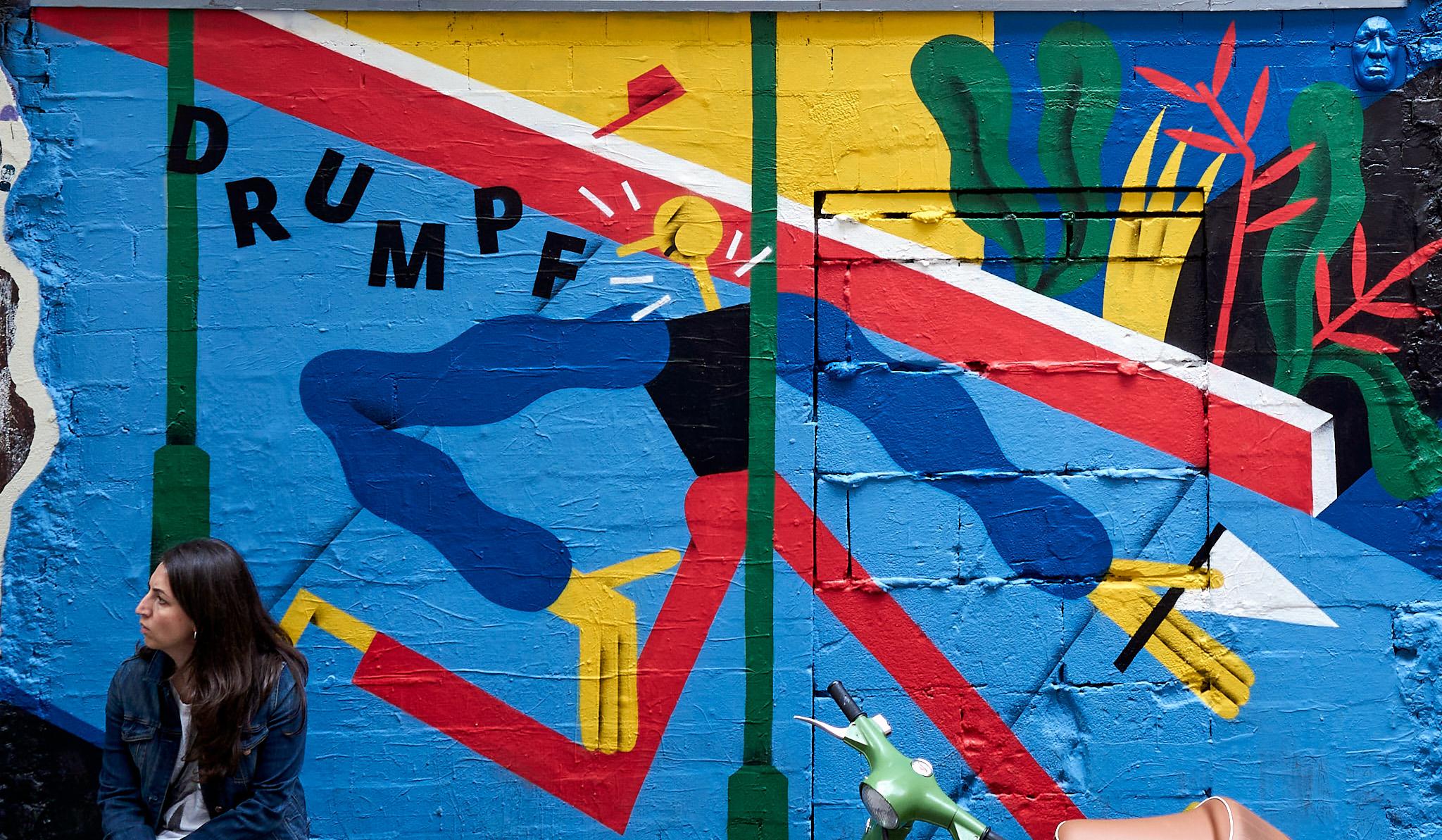
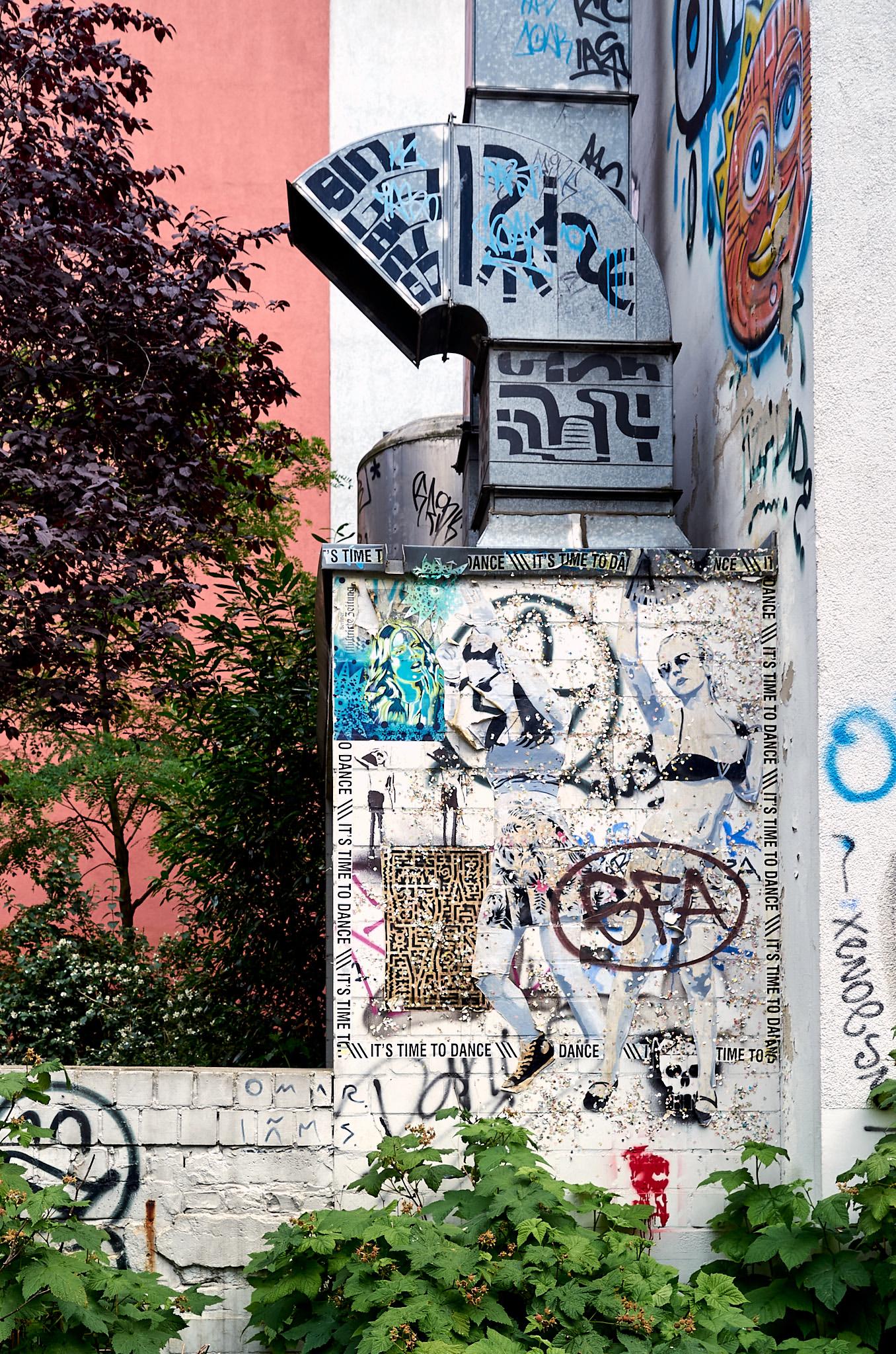

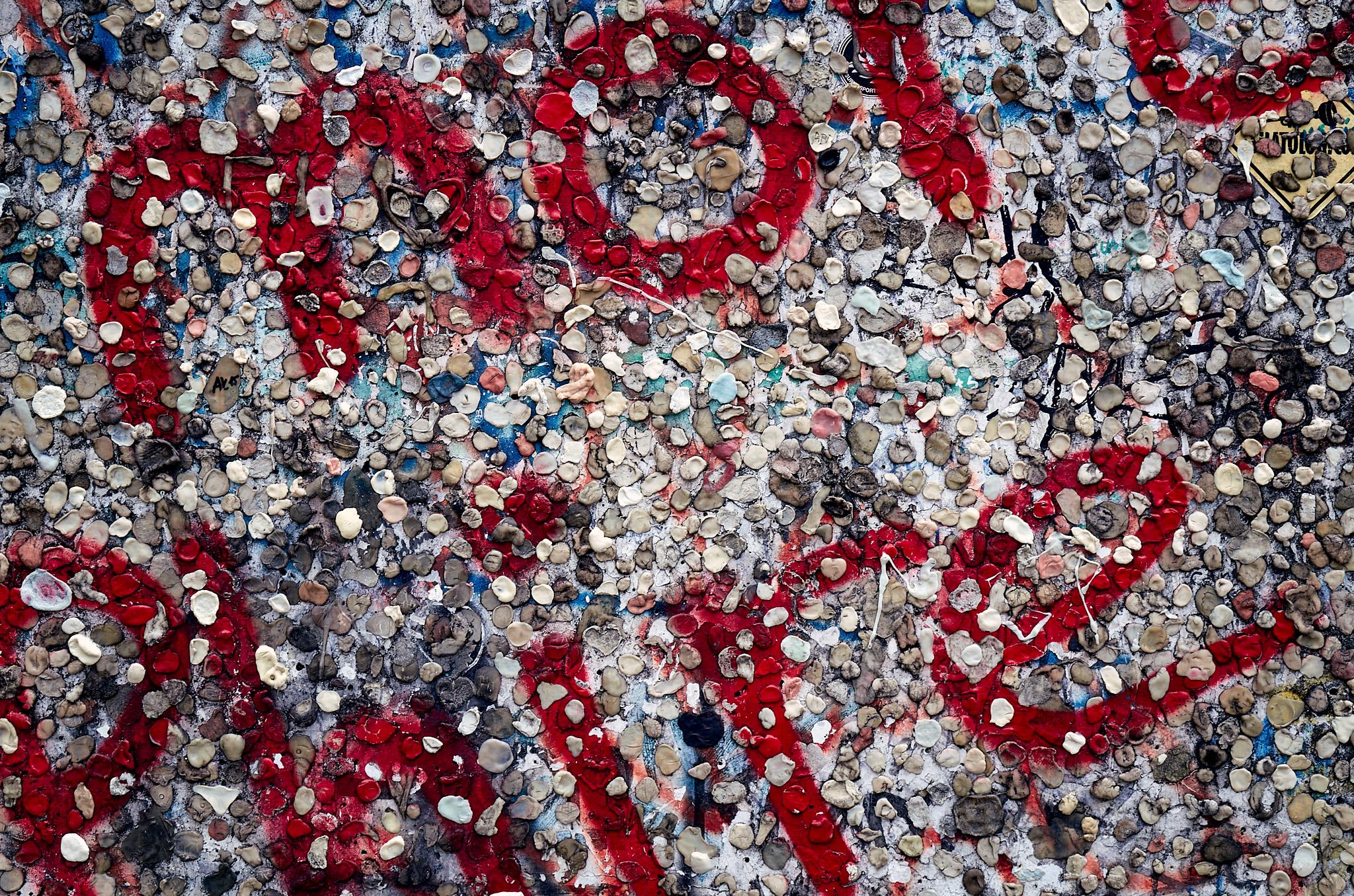
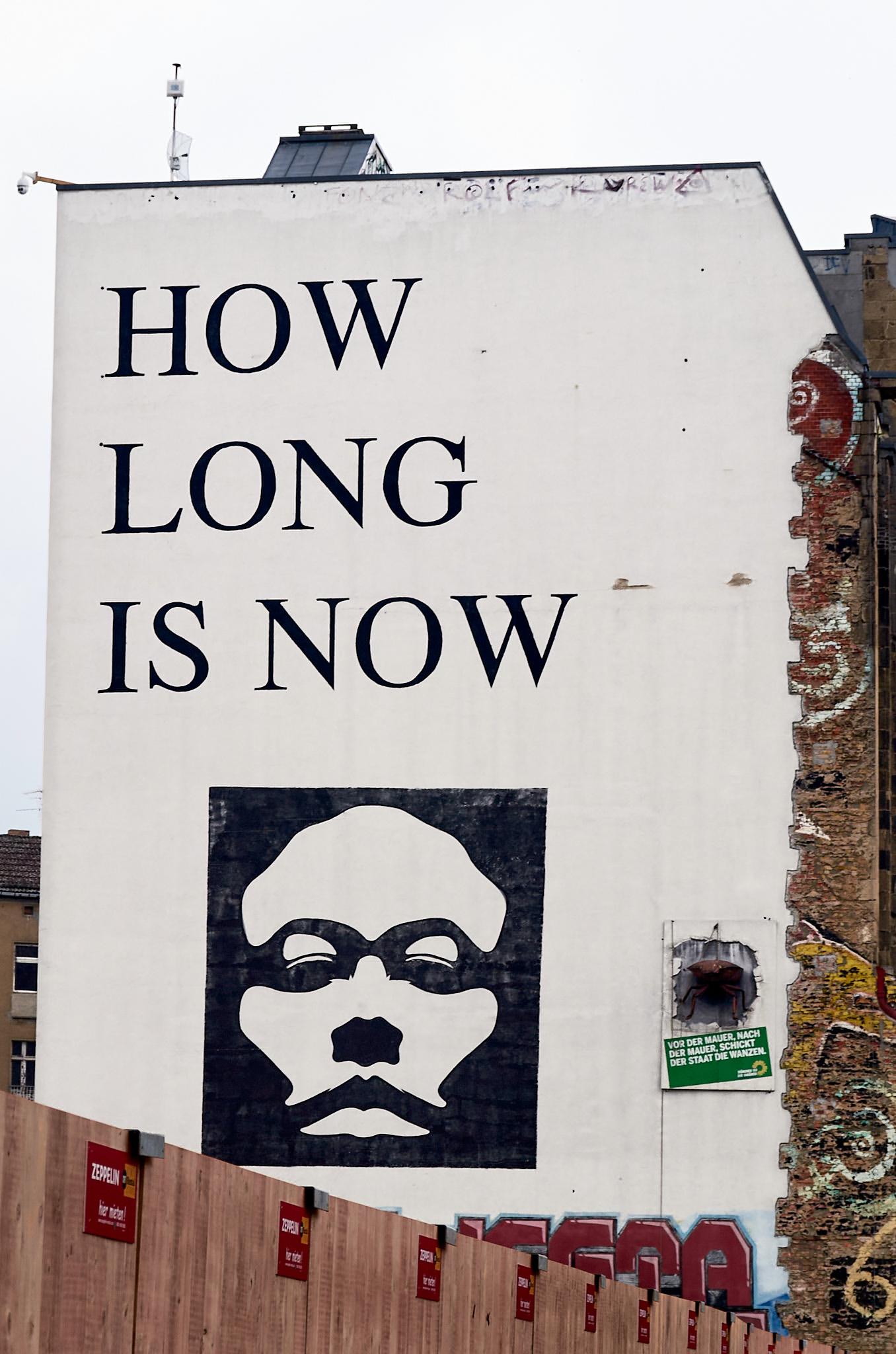
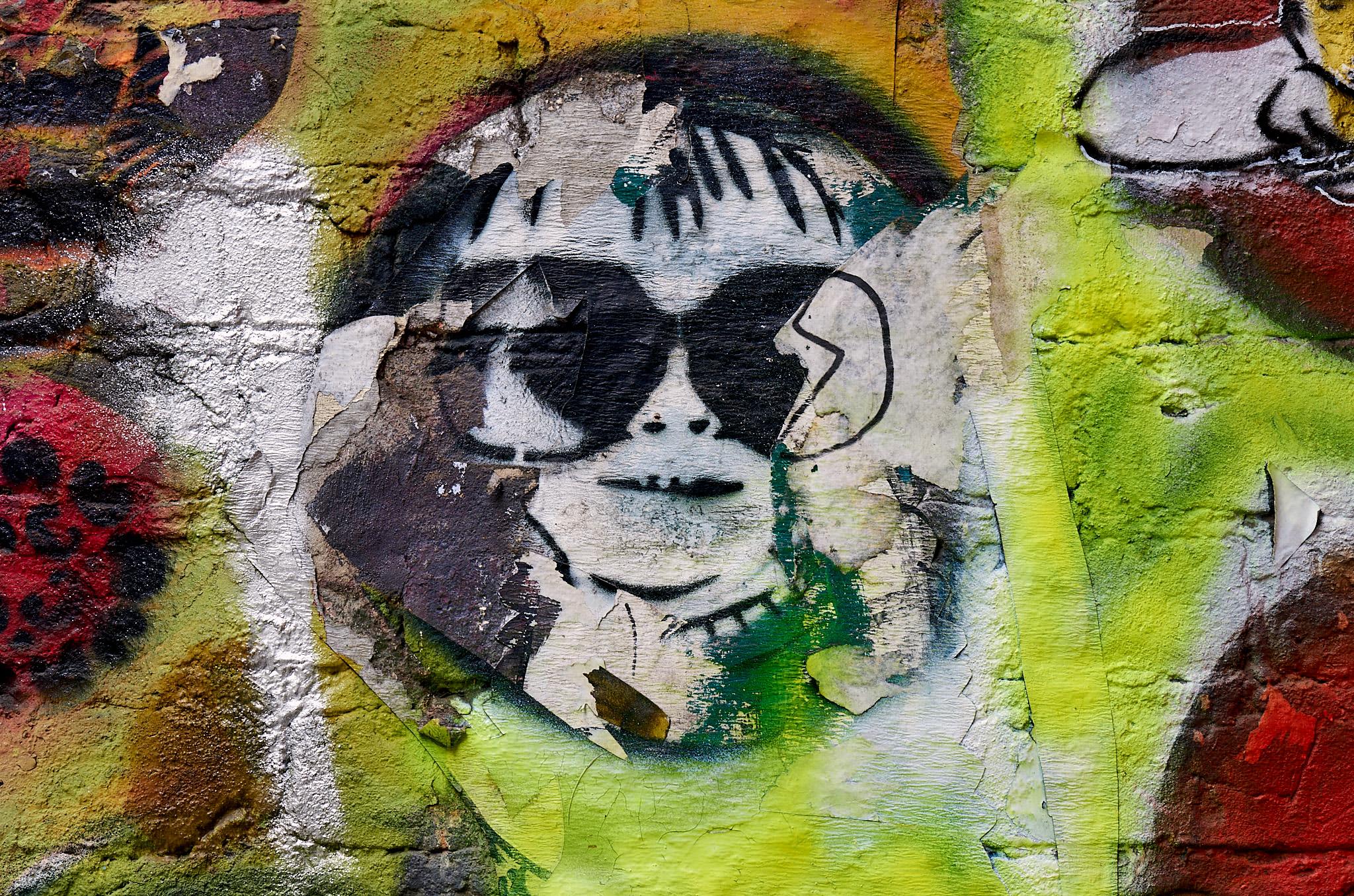

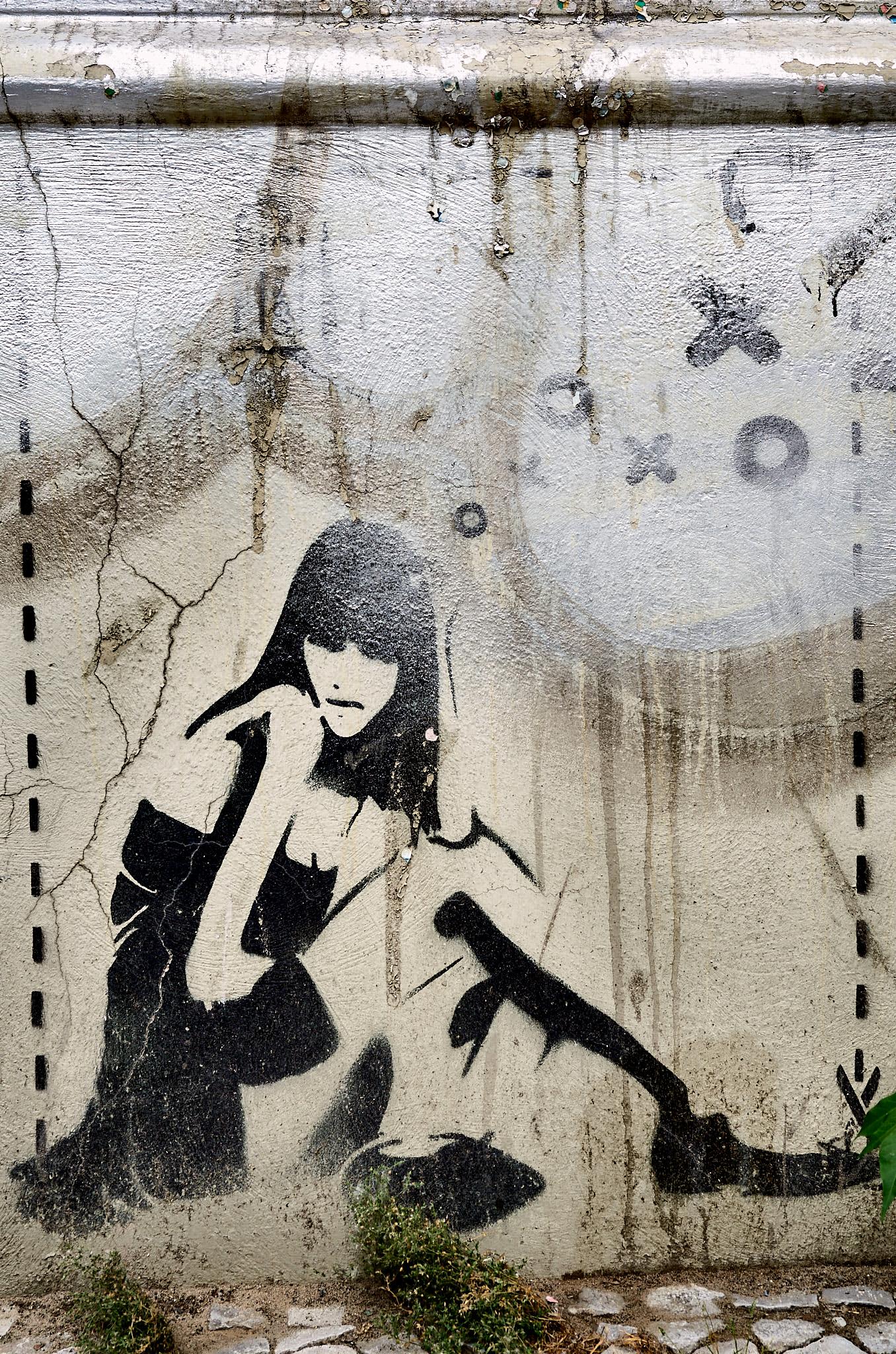
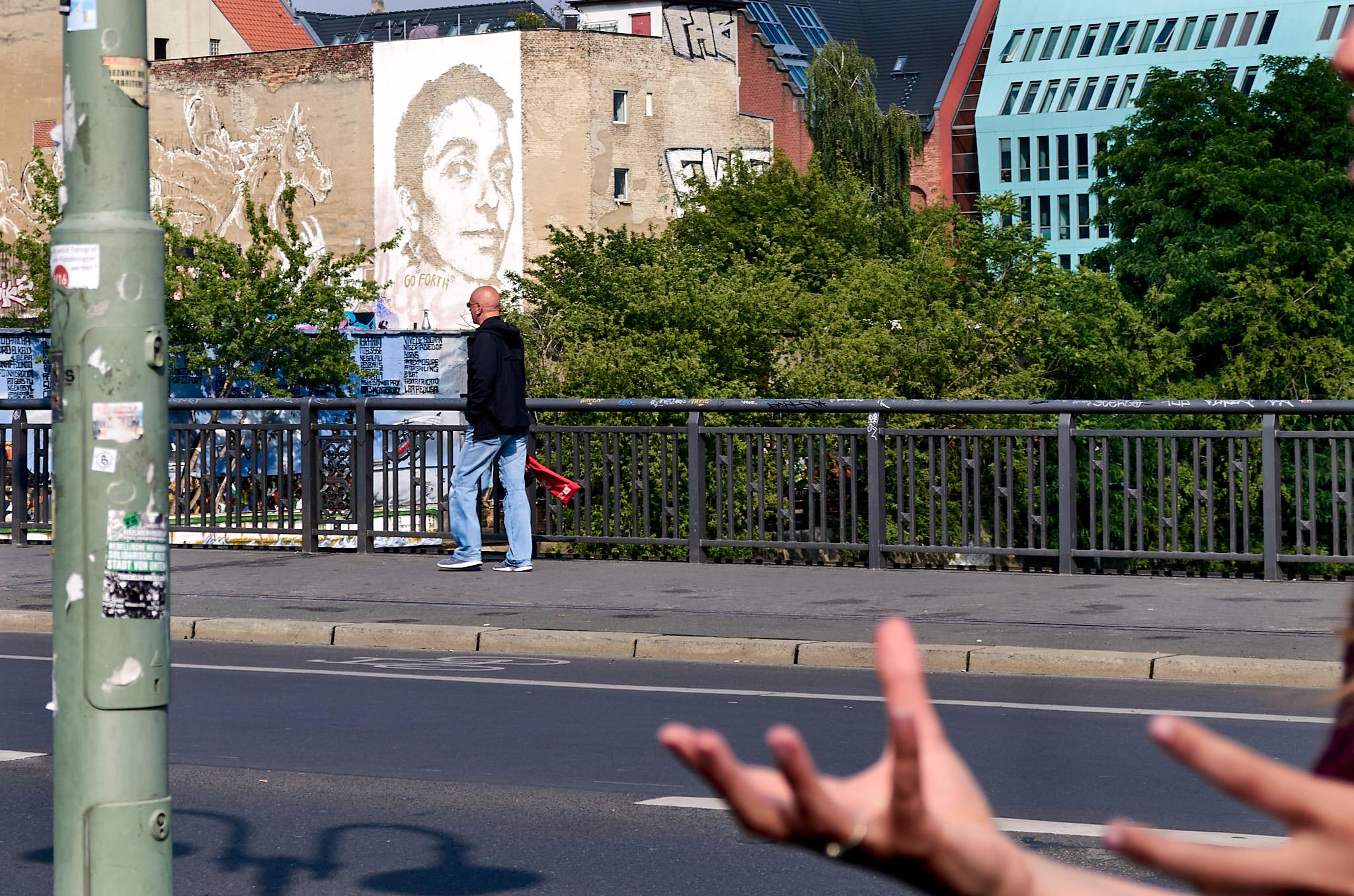


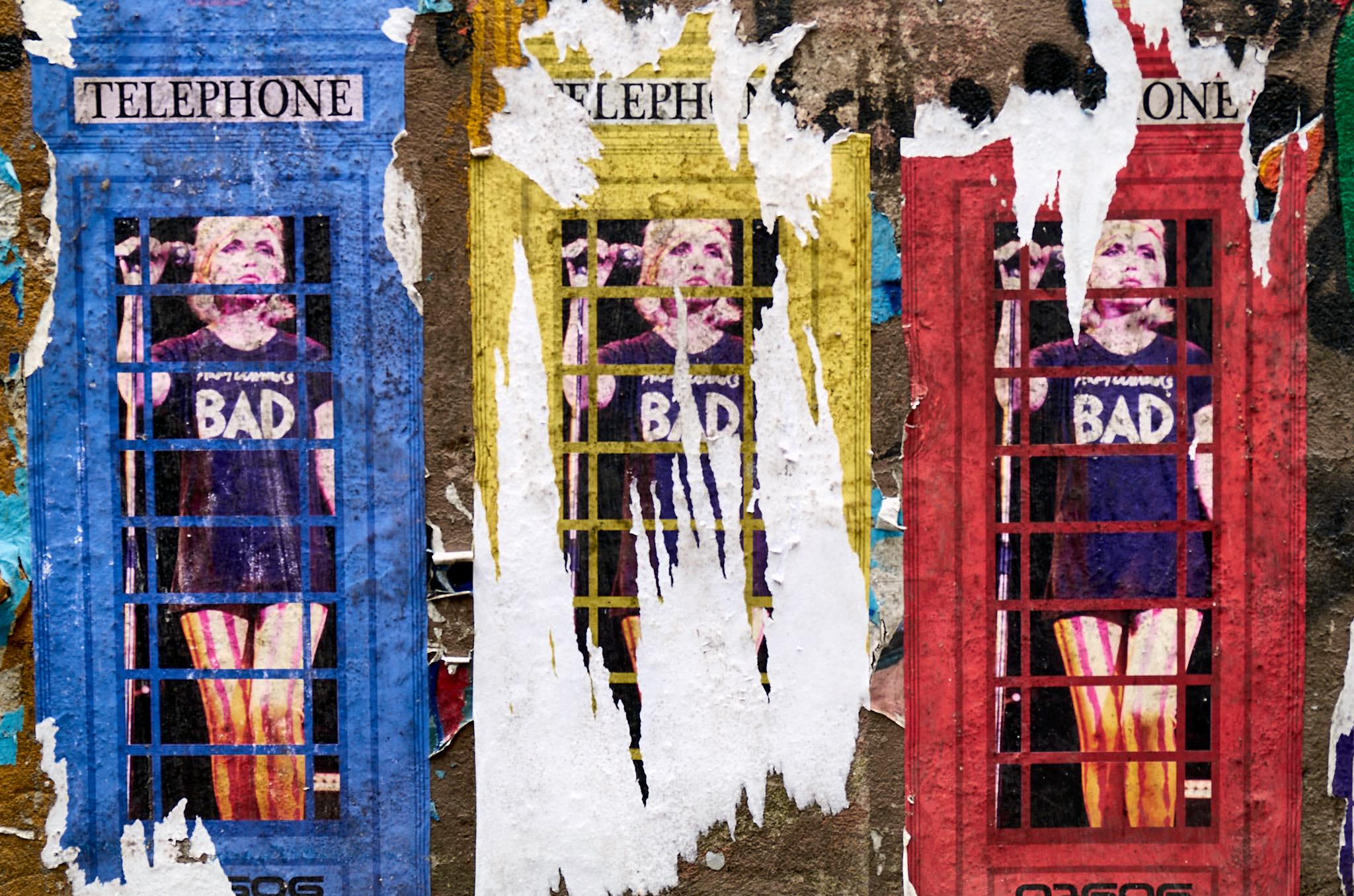
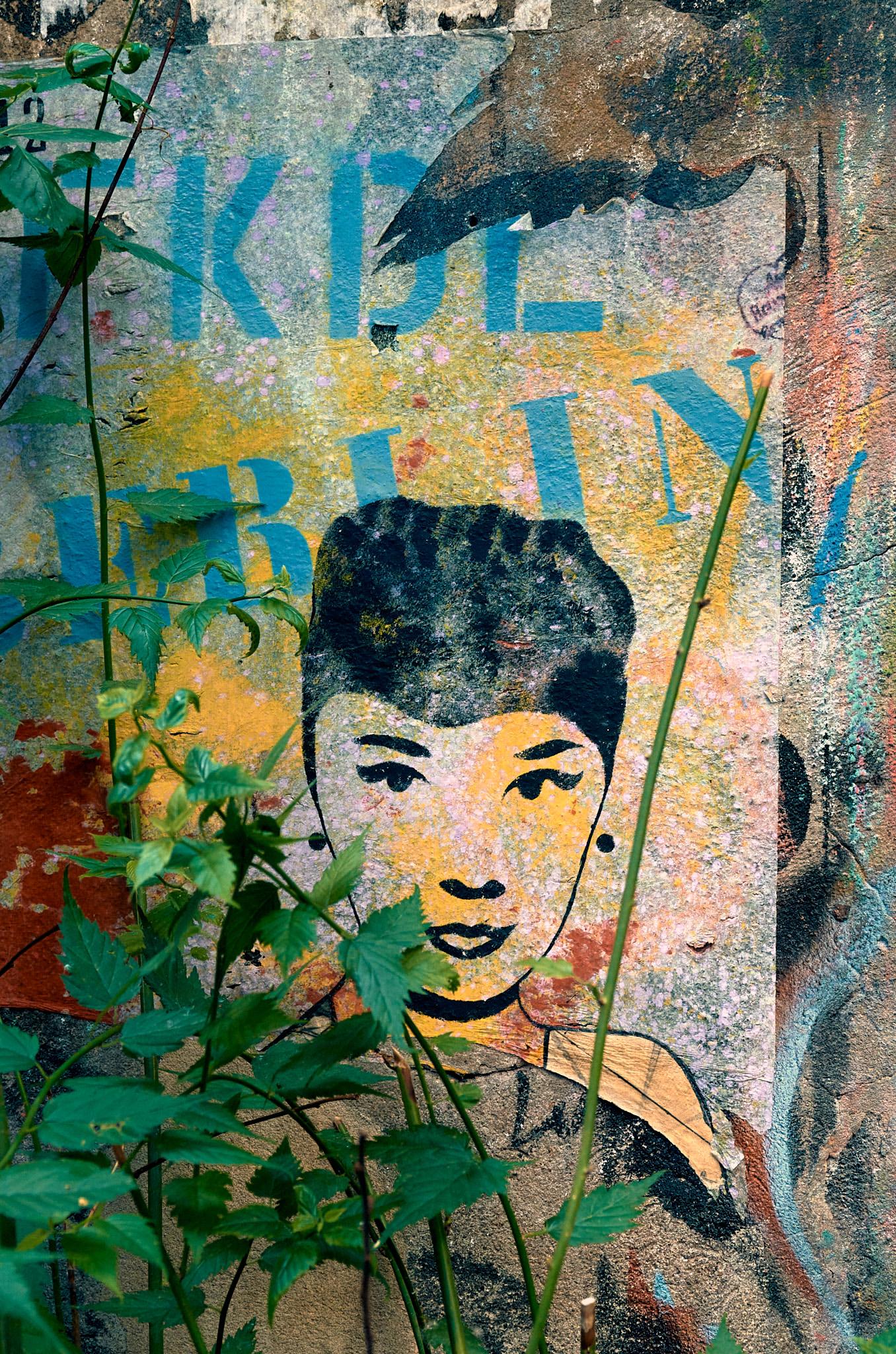
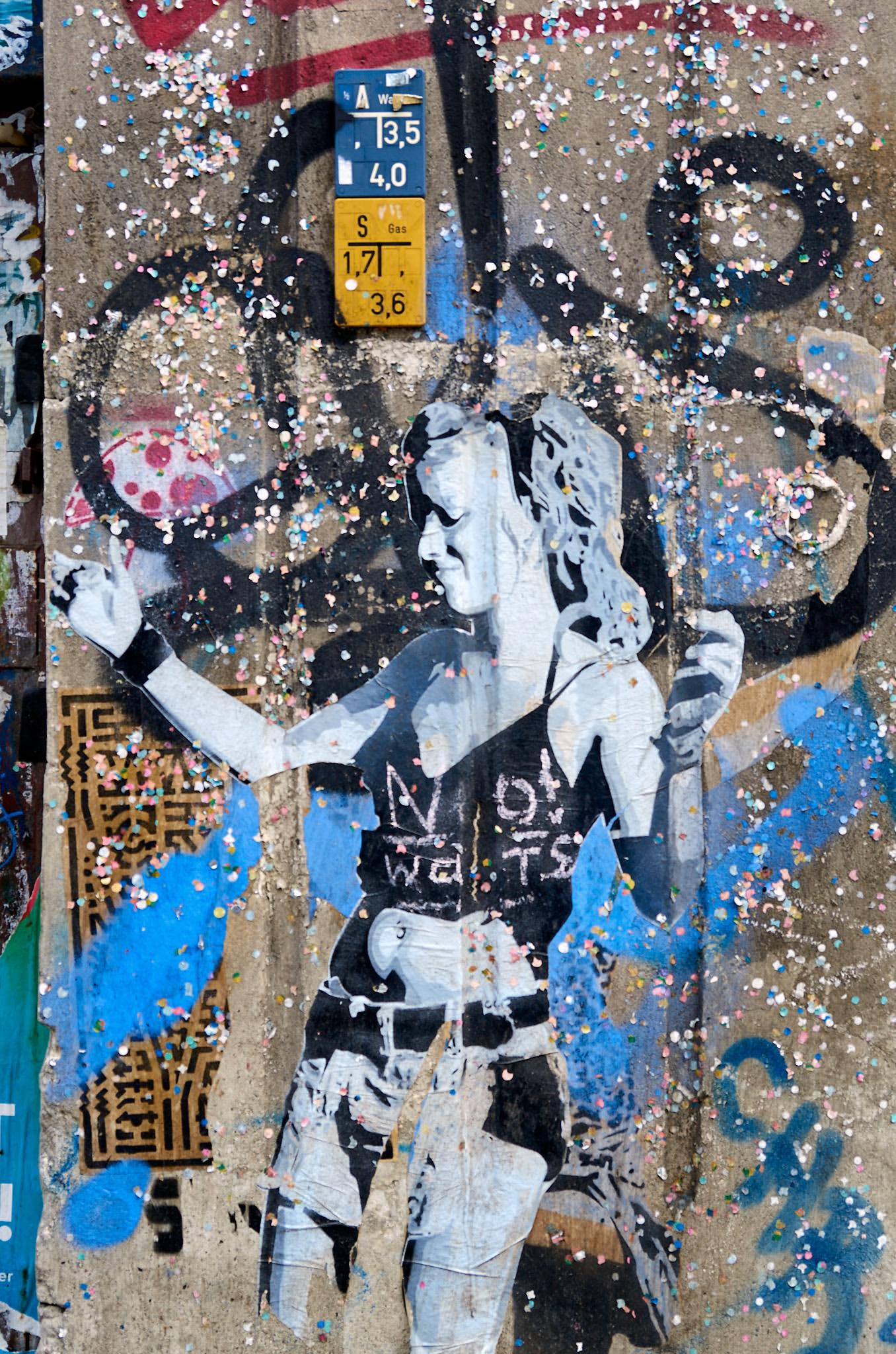
Not all commissioned work is done on behalf of large companies, I know of some locations where the owner of the property allows a street artist a free hand. A few years ago, I watched a creation in progress on one such wall, it depicted a group of men controlling the world’s wealth on the back of the distressed proletariat. The problem was that the artist gave the depicted ‘wealthy’ grossly characterised Jewish features. The local council deemed it Anti-Semitic and ordered it to be overpainted. Jeremy Corbin, the then leader of the Labour Party complained on the grounds that the council’s actions went against the right of freedom of expression. He later retracted his earlier statement.
As for murals or street art, I don’t it think that it matters much. Most street art appears on some kind of wall, a word derived from the Latin – Murus
Cheers Farhiz, an interesting canter around a subject I’ve never taken many images of.
Shows the X-V well.
Enjoy your weekend.
Thanks Dave. Jean is doing a good job though.
Prefer Banksy person! Thank you For giving me a new perspective! Keep the articles coming.
Thanks John, didn’t come across a Banksy! Probably vandalised and spirited away 🙂.
Not all street art is vandalism, I see a lot of commissioned work including advertising by large household brand names. That couldn’t happen without the property owner’s consent but I agree that consent should be given prior. There are many conducted tours in London however, the participants spoil the very thing that look at by their presence.
Those are murals.
Hi David-I tend to agree. One sees it even in Delhi where one specific neighbourhood is well known for the art murals adorning the outer walls of their government flats. And there are city tours springing up from such things like the one I joined in Berlin.
In my view, so called “street art” or graffiti is vandalism to someones property. I listened to a presentation by an University professor on is graffiti vandalism or art a few years ago. He was promoting it as art and a way for people to express themselves. A lot of people we’re getting angry. He got upset though when I asked him if he would like it if I hired someone to graffiti his home garage door….
At the risk of being judgemental: when I reflect on photos that touch me, I would say none of them are from individuals trying to “express themselves.”
Perhaps it’s just me… but I suspect that to do Art, one has to grow beyond simply expressing oneself.
Hi Brian, maybe you’re right but like David Cantor mentioned, not all street art is vandalism, a lot is commissioned now by city councils and private businesses. And I think there is a difference between graffiti and street art. I would most probably not want graffiti on my walls like the professor, but I may be okay with street art. Did you ask him if he would be okay with street art? I think, there is an implicit assumption that street art takes talent and creativity and graffiti not so much. I may be wrong.
I’ve bumped into Jimmy C twice in the Spitalfields area of London. One work was a tribute to Mick Taylor an East End character after he passed away, someone I photographed several times and still miss. The other person that he commemorated was Charlie Burns, another East End personality. If I remember correctly, Jimmy is Australian, nice bloke.
David
That’s very cool, David!
This is quite a ‘challenging’ article, possibly moreso for the older generation. It also also encourages all kinds of searching questions. Does street art bear the same relation to art as street photography does to photography. Are Japanese ‘floating world’(Ukiyo-e) prints a similar form of art? Or is manga a closer analogy?
Street art seems to me a very ‘in-your-face’ kind of art: if you’re out and about, you are somewhat forced to see it. But isn’t the same true of religious art inside cathedrals? Or sculptures like Michelangelo’s David, in public squares?
But Ukiyo-e required years of training and enormous technical skill. Can the same be said of street art?
There are two aspects of street art about which I’m conflicted. The first is the statement “ graffiti has historically been a response against authority”. Well, but pure graffiti is also a very large way of saying “Hey! Look at me!”.
As a second, I also wonder whether street art is largely an art of young males, with ambivalent feelings about women.
I don’t have good answers to any of these questions. I do know that your article has given me much to think about.
Hi Kathy, here is a link (http://journeyforevermag.com/typesofgraffiti) that you may like to check out. I’m not sure that it will be able to answer all the points you brought up but it may be a start. And here is another on graffiti in Japan (https://sabukaru.online/articles/graffiti-in-tokyo-exists-you-just-have-to-know-where-to-find-it#:~:text=The%20word%20%22graffiti%22%20in%20Japanese,%2C%20signs%2C%20colours%2C%20advertisements.) It is an interesting subject, though I suspect, not everyone’s cup of tea.
Good morning, Farhiz!
Thanks for the links, which contained much good information. In Japan the article concludes “Graffiti bombers are prone to using simpler styles, tags or throw-ups, because speed is an important factor.” I don’t believe kind of graffiti is really the topic of your article.
The other link goes into some of the history of American graffiti, and also shows some of the styles. It notes that in New York City, graffiti originally served the purpose of marking territories of street gangs. Many kinds of male animals also mark territory, and again, I really don’t think this is what your article is about.
One of the styles mentioned is ‘piece’. To quote “Short for “masterpiece”, painted free-hand. A big and complex piece of wall painting that is time-consuming and difficult to execute. It’s characterised by many different components, such as a rich palette, 3D elements, and other visual marks. It’s a work of an experienced writer.”
It strikes me that this is closer to what we’ve been discussing as murals. Given the complexity of the art, I doubt this can be done anonymously, in the middle of the night. Here I used the term ‘art’, and I believe the use is justified.
As an aside, this morning I opened the local news feed; the lead article concerned arrest warrants for two 18 year old males, for over 300 ‘throws’ — very simple, and simple to make, painted monikers. I try to avoid attributing motives; they’re unknowable, often even to ourselves. But public acts can be analyzed publicly. I can’t see this as a form of protest, like ‘Stop the War’ or ‘Boris Johnson is a_______'(fill in your own blank). These are not protests; they’re slogans, and to me slogans are a way to influence people without delving into the complexities of issues.
Perhaps it’s unfortunate that real art such as ‘piece’ is lumped into the same category as sloganeering, territory marking, or lord only knows what frisson young males get from performing illegal activities in the middle of the night. Whatever that is, I’d argue it isn’t art!
Kathy, Thanks, I’ve replied to your comment, it’s just awaiting moderation.
Thanks Farhiz for this thorough, informative article about street art. The variety of materials used is pretty amazing. I particularly like the telephone booth series as it reminds me some of Andy Warhol’s paintings.
Jean
Thanks Jean, Look closer and you will notice that Debbie Harry’s dress has Andy Warhol printed on it! D7606 mentions Warhol as a strong influence in an interview I read.
I always adored the Street Art at Berlin Mitte. But frankly said I never thought that much about it and its creators. So thank you for this informative article!
Kind regards
Jens
Thank you, Jens. As David Cantor says in his comment below, a lot if not all, street art, even in Delhi, is commissioned work.